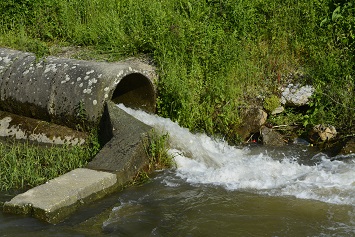Stormwater violations – The true cost of non-compliance
You may have figured in certain environmental fines as part of the cost of doing business. However, the fine, no matter how huge, is often just one part of the true cost of running afoul of environmental regulations. As an environment, health, and safety (EHS) manager, you are going to have to explain high costs. Today we will examine the true costs of environmental noncompliance for a power company that didn’t meet its stormwater obligations.
Did You Figure in a SEP?
If you have violated an environmental regulation, under the U.S. Environmental Protection Agency’s (EPA) supplemental environmental project (SEP) program, you may “voluntarily agree” to undertake an environmentally beneficial project related to the violation in exchange for mitigation of the applied penalty. However, SEPs can be enormously costly and cannot be part of the costs of bringing your facility back into compliance—you still have to pay for that. So, you have the cash penalty, the SEP costs, the costs to bring your facility up to speed, and other ancillary costs. Here’s an example where a company probably would have been happy “just” to pay the hefty fine.
Alleged Violations
The Potomac Electric Power Company (Pepco) recently settled with the EPA and the Department of Justice (DOJ) for alleged violations of Pepco’s National Pollutant Discharge Elimination System (NPDES) permit at its service center located in Washington, D.C. Pepco allegedly discharged storm water containing metals, including copper, iron, lead, zinc, and cadmium and total suspended solids (TSS) in concentrations greater than the effluent limits in its NPDES permit between 2009 and 2015. These discharges were through its storm water sewer to the Anacostia River. Pepco reported exceedances of permitted limits on at least 137 occasions on its monthly discharge monitoring reports (DMRs) that it submitted to the EPA.
According to the Consent Decree, Pepco allegedly exceeded either the monthly average or daily maximum a total of 7,079 times. Specifically, according to the EPA and the DOJ, Pepco violated its NPDES permit for copper 1,911 times, iron 1,724 times, lead 272 times, zinc 1,817 times, cadmium 364 times, and TSS 991 times.
Costs
Civil penalty. Pepco must pay a civil penalty of $1.6 million, with interest accruing from the day the Consent Decree was lodged.
SEP. Pepco must implement a Storm water Retention Project using green infrastructure techniques to capture and treat storm water that currently drains from one of the outfalls from its facility into the Anacostia River. The project must be completed on or before June 30, 2018… If the company does not meet the SEP deadlines, it is subject to penalties of up to $5,000 per day per violation. If Pepco fails to complete the SEP, or stops working on the SEP, the penalty will be $500,000.
Compliance costs. Pepco must also pay the costs related to coming into compliance with its storm water obligations. These include putting into place best management practices (BMPs) to prevent the metals and other pollutants from entering into Pepco’s storm water drainage system, including booms and filters at each drain leading into the system, as well as enhanced inspections and other measures. In addition, Pepco will install in-pipe treatment systems in several areas to remove the metals from the stormwater in the drainage system until the permit limits are met.
Attorneys’ fees. In addition to the penalty, SEP, and compliance costs, Pepco has its own attorneys’ fees and may also be subject to attorney’s fees and other costs the EPA incurs for actions the Agency takes if the company defaults on any of its penalty payments. (extracted from ehsdailyadvisor.blr.com) Read more…
Clare Condon


